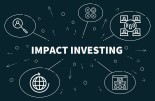Diane Mak & Nadia Nikolova: Managing and measuring impact in private markets
Diane Mak & Nadia Nikolova: Managing and measuring impact in private markets

The growth of impact investing has accelerated, while definitions still vary widely. How are these definitions working towards greater clarity in impact investments?
By Diane Mak, Director of Impact Measurement & Management, and Nadia Nikolova, Lead Portfolio Manager Sustainable Private Credit, both at Allianz Global Investors
The opinions expressed in this text are those of the authors.
With the rapid growth of investor allocations to impact strategies over the past few years reaching over $ 1 trillion of assets under management,1 the opportunity to generate impact at scale has never been greater. It has also become imperative to clearly define expectations around what impact investments should deliver for society.
We believe it is important both to assess for and to measure impact at the company level, as well as to consider how we – as investors – can contribute to a portfolio company’s impact generation. One of the key aspects is to measure both a company’s footprint and ‘handprint’, in terms of its positive contribution to environmental and social outcomes.
Handprint
The ‘handprint’ measures if revenues of the core business model are aligned to products and services that generate positive outcomes. One example could be energy efficiency solutions for buildings, where the percentage of revenues coming from this service, as well as the company’s environmental impact in enabling customers to avoid emissions, would be measured.
Companies with a good handprint are intentional and mission driven. In addition, they typically seek to maintain high performance on footprint measures such as their own emissions.
It is also important to consider negative impact pathways, which can go beyond the SFDR definitions of Principal Adverse Impact (PAI) indicators.
A good example of looking at handprints is education. On the one hand some institutions won’t qualify, because the students would have a lot of debt at the end of their studies, on top of which the low quality of teaching at some of these means that learning or employment outcomes will be poor.
On the other hand, there are affordable, high-quality educational technology programmes that supplement more traditional classroom learning, which have a good evidence base for improving maths or reading outcomes, and those may be good candidates for impact investing.
Data availability: a driver of impact approaches
We feel it is important to apply a consistent impact approach across developed markets and emerging markets. While the goal is to pursue the same SDGs across both, there are practical reasons for differences in the impact process.
In practice, data limitations in emerging markets mean that we work closely with development finance institutions (DFIs) and research partners, and leverage on the insights and data they can capture.
In developed markets, we rely predominantly on our own impact analysis and on the due diligence and discussions with potential investees to inform decision-making.









